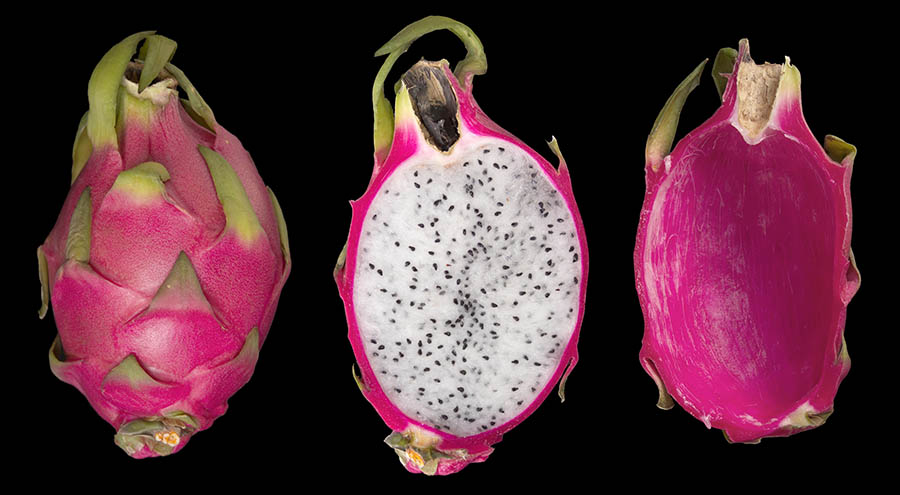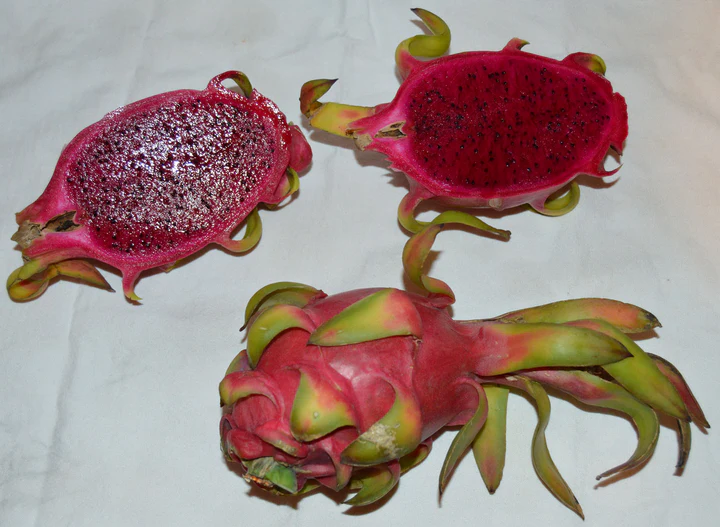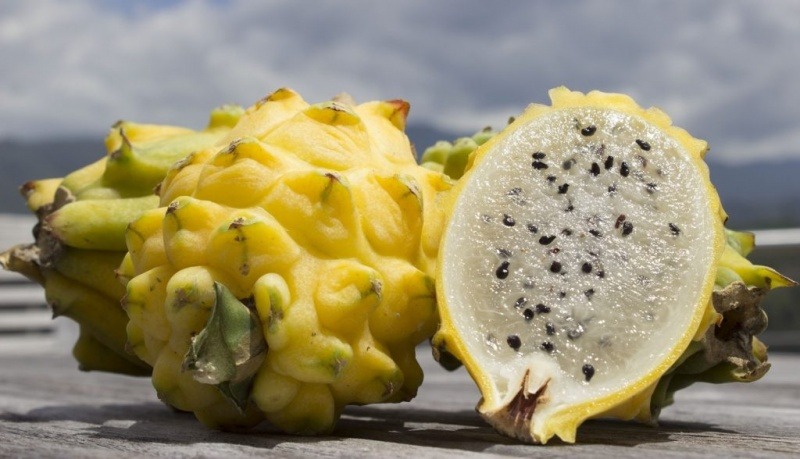Have you ever stumbled upon a fruit that looks like it belongs in a fantasy world? Meet the dragon fruit, or pitaya, a vibrant gem that not only delights the eyes but also tantalizes the taste buds. With its bright pink or yellow skin and quirky green scales, this exotic fruit has a way of turning any dish into a work of art. But there’s more to dragon fruit than just its stunning appearance—it’s packed with nutrition and health benefits. Let’s explore this remarkable fruit together, discovering its origins, varieties, and the best ways to enjoy it.
Dragon fruit is the fruit of several cactus species native to Central America and Mexico. The moment you cut one open, you’re greeted with a stunning sight: white or red flesh dotted with tiny black seeds, all waiting to be tasted. Here are the main types of dragon fruit you might encounter:
Hylocereus undatus: This is the classic white-fleshed dragon fruit, characterized by its vibrant pink skin and mild, sweet flavor.

Hylocereus costaricensis: If you’re seeking something sweeter, this red-fleshed variety might just steal your heart with its richer flavor and eye-catching crimson interior.

Selenicereus megalanthus: Don’t overlook the yellow dragon fruit! With its smooth yellow skin and delightful taste, it’s a refreshing treat on a hot day.

The Blooming Process
Picture this: dragon fruit blooms at night, unveiling large, fragrant white flowers known as “moonflowers.” These gorgeous blooms open for just one night, inviting nighttime pollinators like bats and moths to do their magic. The flowering season generally kicks off in warm months, peaking in late spring and summer. After pollination, the fruit begins to develop, slowly ripening over several weeks. Watching this process is like witnessing nature’s own time-lapse.
When is the Right Time to Eat Dragon Fruit?
Timing is everything when it comes to enjoying dragon fruit. You’ll want to pick one that has vibrant skin and gives a little when you gently squeeze it. This is usually a sign that it’s ripe and ready to be savored, typically about 30 to 50 days after the flower blooms.
Nutritional Benefits
Dragon fruit isn’t just beautiful; it’s also a nutritional powerhouse. Here’s why you should consider adding it to your diet:
- Rich in Antioxidants: Packed with antioxidants, dragon fruit helps combat oxidative stress, supporting your overall health and well-being.
- High in Fiber: Its fiber content promotes digestive health, keeping everything running smoothly.
- Vitamin C Boost: Dragon fruit is an excellent source of vitamin C, which can enhance your immune system and give your skin a radiant glow.
- Hydration: With its high water content, this fruit is refreshing and keeps you hydrated, especially during those hot summer days.
How to Enjoy Dragon Fruit
The best part about dragon fruit? There are countless ways to enjoy it! Here are some of my favorite ideas:
- Fresh and Raw: Simply slice it open and scoop out the flesh with a spoon. It’s a delicious, refreshing snack that’s perfect on its own or in a fruit salad.
- Smoothies: Blend dragon fruit with your favorite fruits, yogurt, or coconut milk for a vibrant and nutritious smoothie that brightens your morning.
- Salads: Chop it into cubes and toss it into a salad for an unexpected pop of color and sweetness that your friends will rave about.
- Desserts: Feeling adventurous? Use dragon fruit in desserts like sorbets, parfaits, or fruit tarts to impress your guests.







